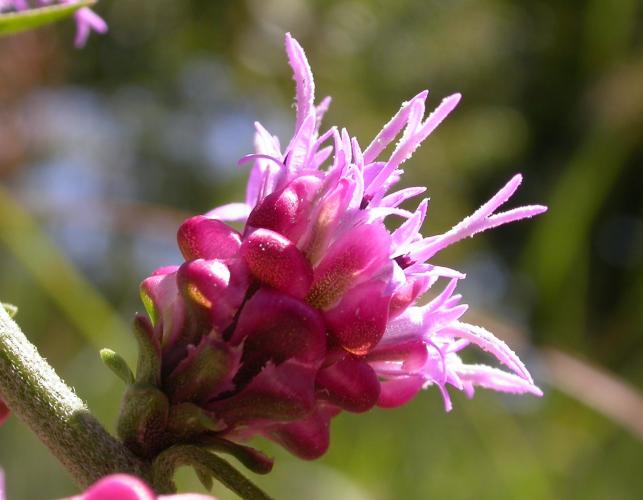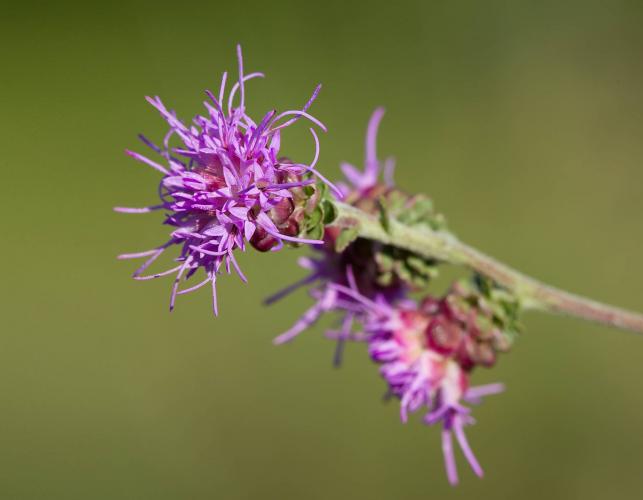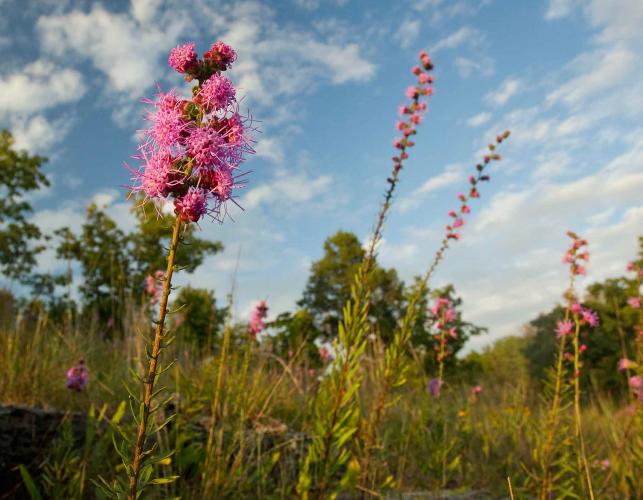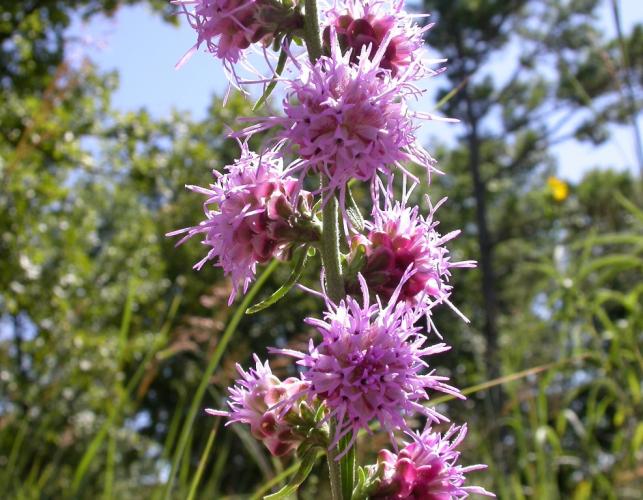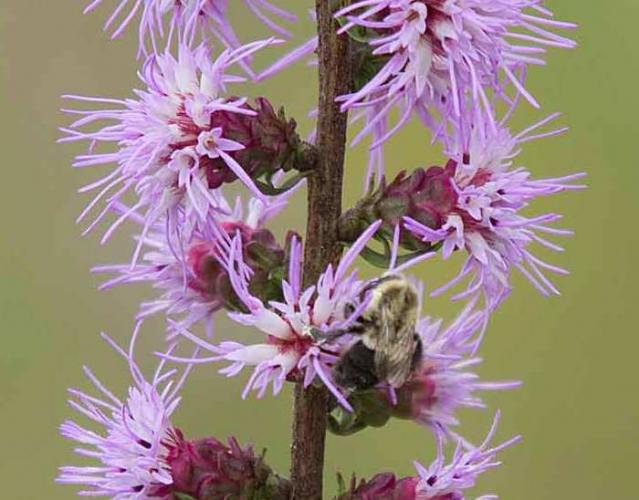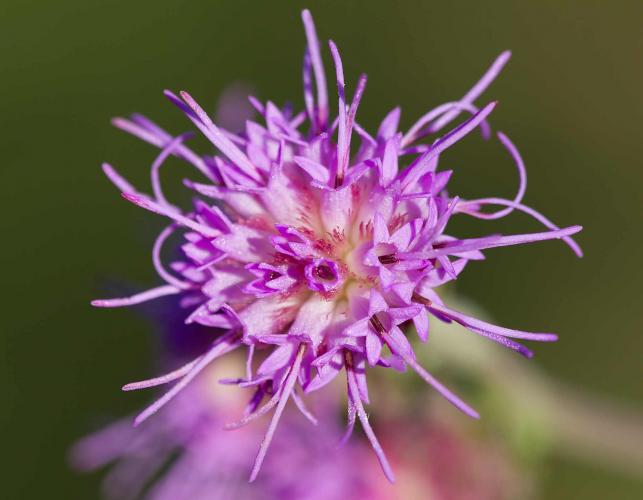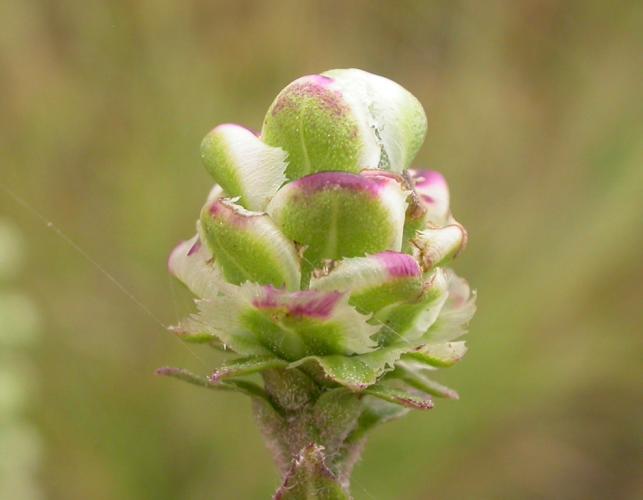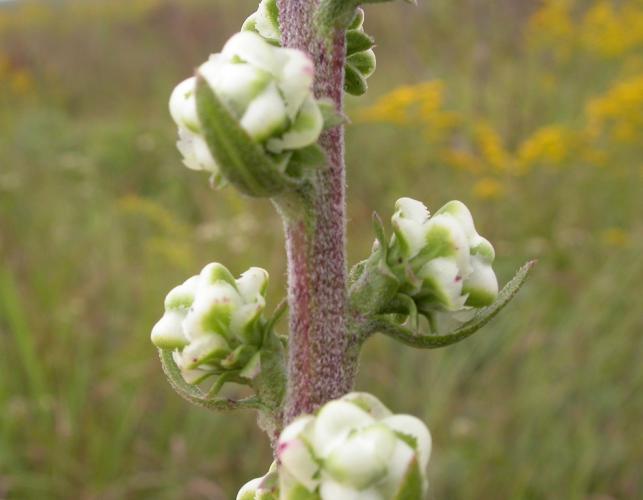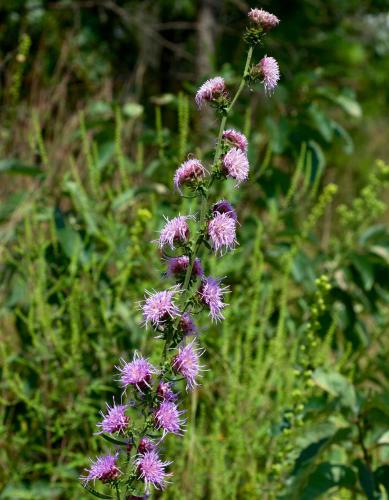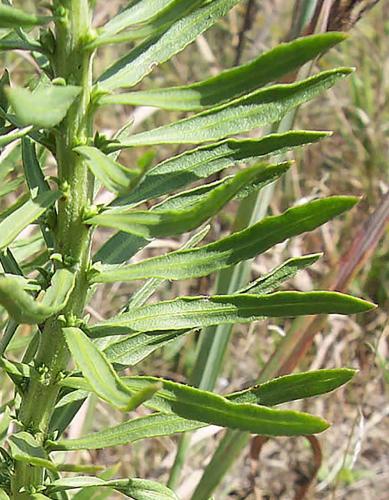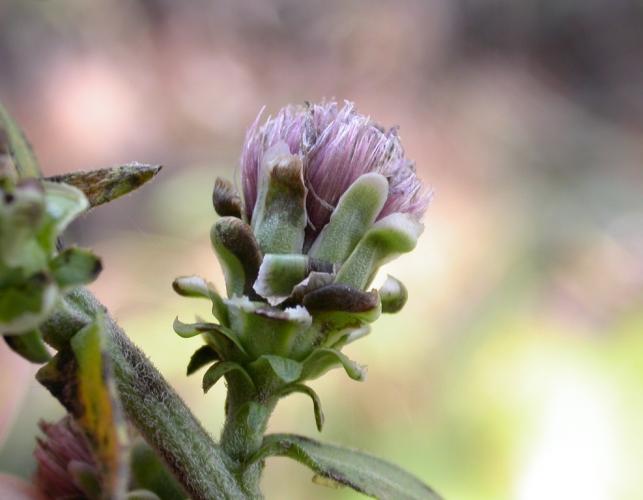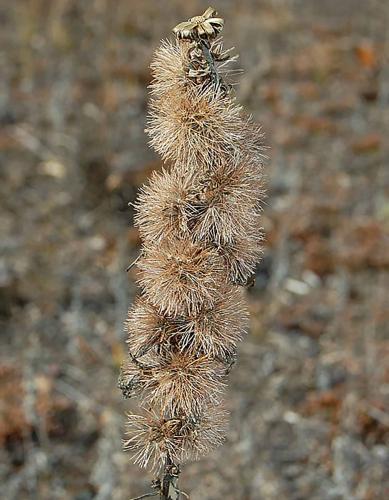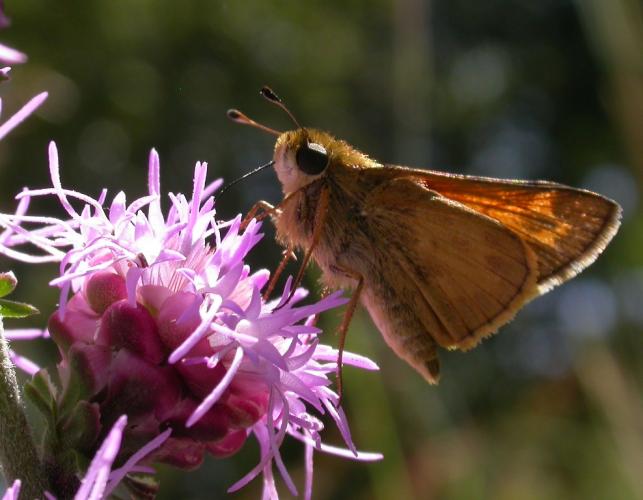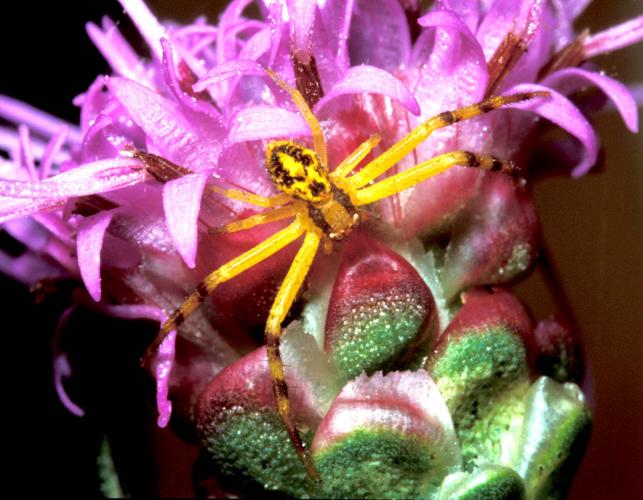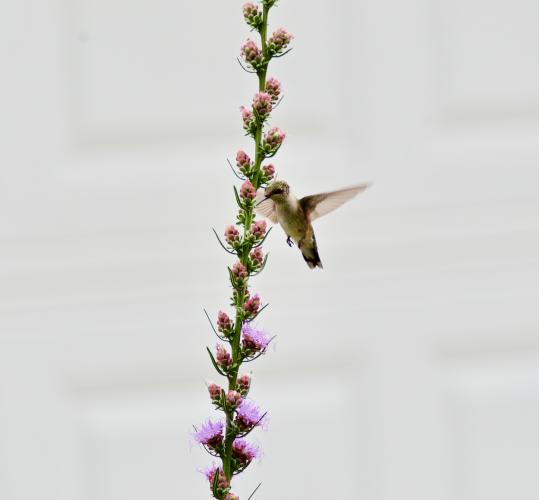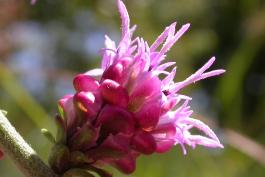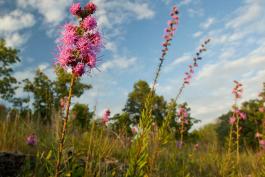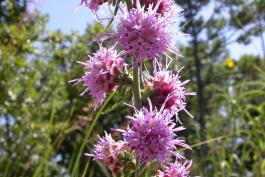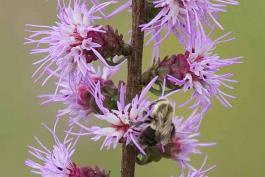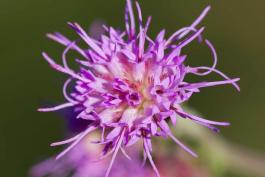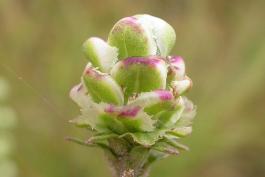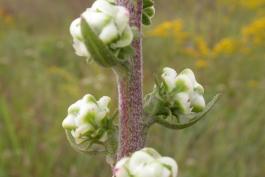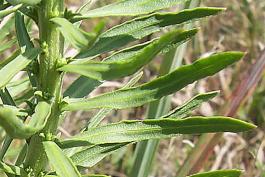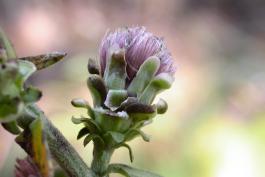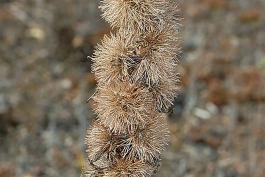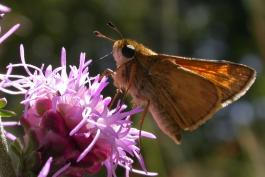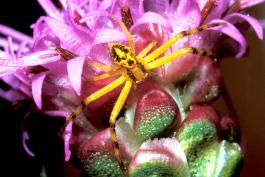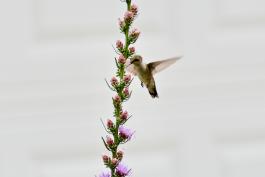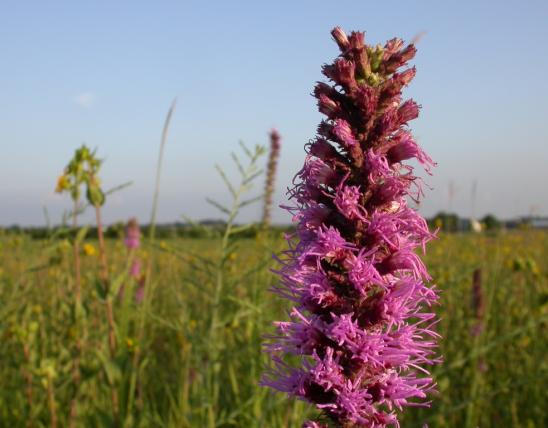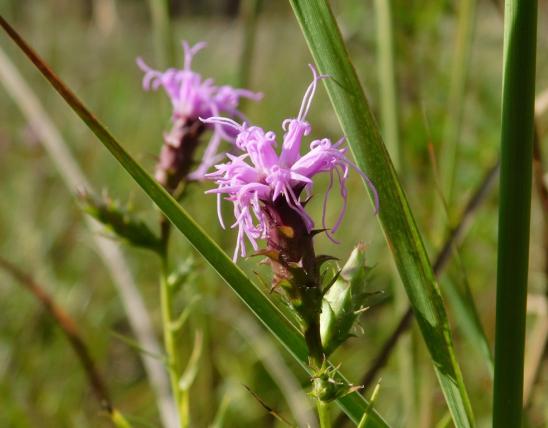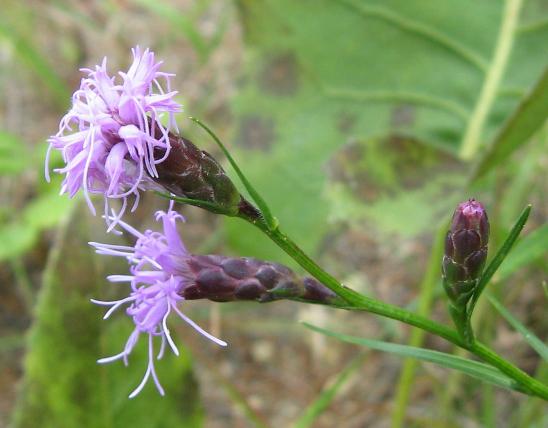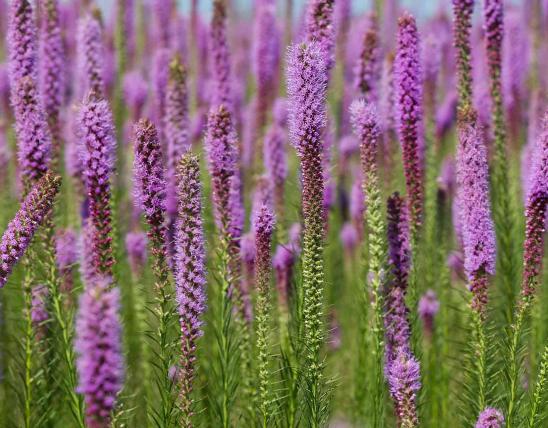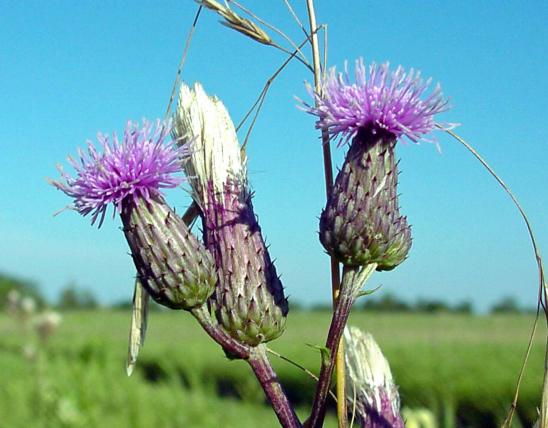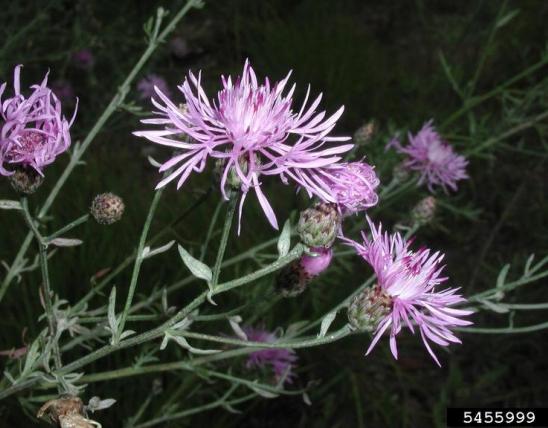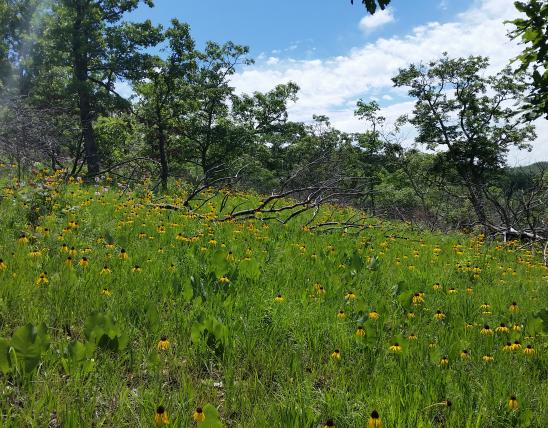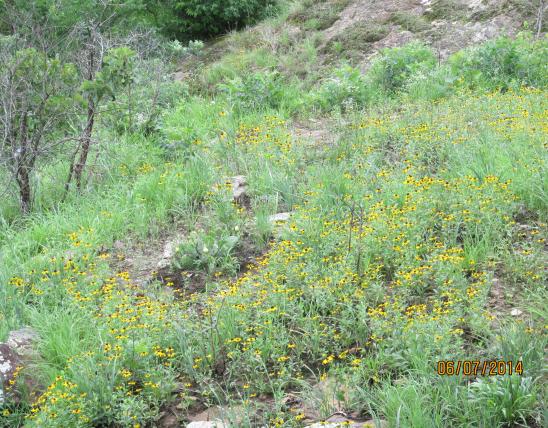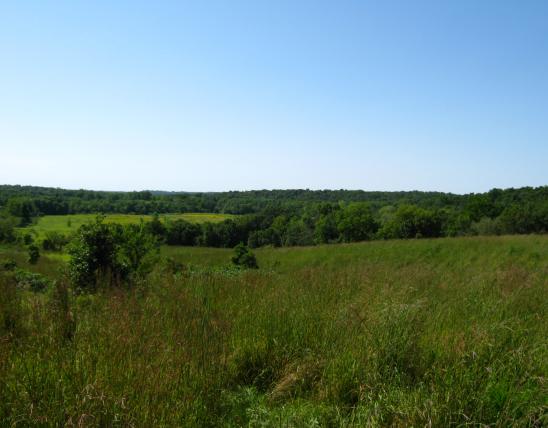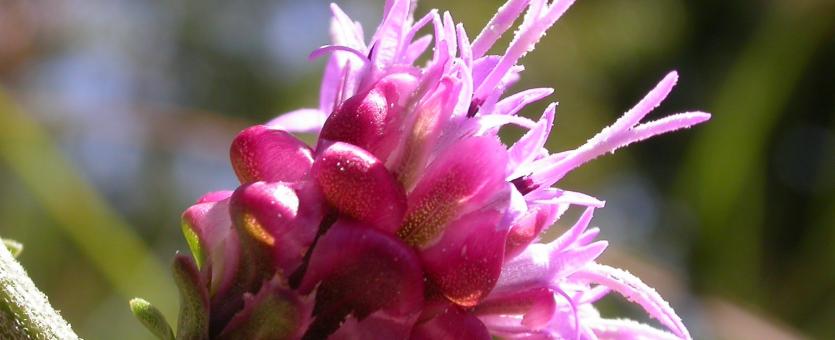
Rough blazing star is an upright perennial native wildflower with an unbranched stalk. Its many buttonlike, rose-purple flowerheads are alternate and evenly spaced along the spikelike upper stalk. It occurs in a variety of sunny habitats nearly statewide except for the Bootheel.
The leaves are alternate; the lowest ones to 10 inches long and 1 inch wide, widest at the middle, with a petiole (leaf stalk); the upper ones becoming much shorter and stalkless; narrowly lance-shaped; with 1 main vein.
The flowerheads are alternate along the upper stalk, spaced apart so you can easily see the main plant stalk; the flowerheads are stemless or have only very short stems; to about 1 inch wide, with 14–30 florets; pink to reddish purple or magenta, rarely white; the topmost/terminal head is not notably larger than the others.
The involucral bracts (overlapping leaflike structures at the base of each flowerhead) are rounded, somewhat spreading, appearing pouched or swollen, mostly with broad, thin, pale to transparent margins that look unevenly torn and are sometimes strongly purplish-tinged. The heads have 14–30 disk florets. Blooms August–November.
Learn more about this and Missouri’s other blazing stars on their group page.
Similar species: There are 9 species of Liatris recorded for Missouri, and many of these have been known to hybridize where they occur in the same vicinity. To distinguish between the various species and hybrids, one should be prepared to note details of the flower structure, such as the involucral bracts described above.
The two Missouri blazing stars most similar to rough blazing star are L. scariosa (savanna blazing star) and L. squarrulosa (Appalachian blazing star). Rough blazing star is the most common and widespread of the three; its swollen, pouchlike involucral bracts that look torn at the edges guarantee the ID. Also, its flowerheads are sessile on the plant stalk, while the others can have the flowerheads on short stems.
Height: 2–3 feet; taller under favorable conditions.
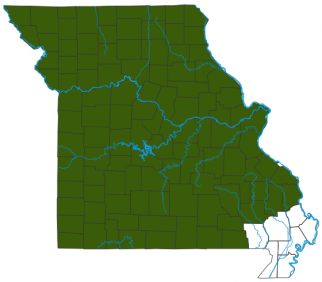
Scattered nearly statewide, although apparently absent from the Southeast Lowlands (Bootheel). Cultivated potentially statewide.
Habitat and Conservation
Occurs in upland and loess hill prairies, glades, exposed ledges and tops of bluffs, savannas, openings of upland forests, and rarely banks of streams; also pastures, railroads, and roadsides.
Human Connections
Blazing stars are some of the showier plants used in native wildflower gardens. They are a magnet for pollinators such as butterflies and bees. Many are available at native plant nurseries.
Blazing stars have a long history of Native American medicinal usage.
The species name, aspera, means “rough.” It might refer to the texture of the leaves, or to the overall rough, nubby look of the involucre.
You know you have progressed in your knowledge of plant identification when you can recognize the distinctively pouched, torn-looking involucral bracts of rough blazing star. Kudos to you!
Ecosystem Connections
Many types of insects visit blazing stars for food. Monarch butterflies are a famous example, but a wide variety of other butterflies, skippers, bees, beetles, flies, and other insects collect pollen or nectar. Aphids and other sap-suckers drink the plant juices with their strawlike bills. Many herbivorous insects chew on or bore into the leaves, flowers, stems, rootstocks, or other plant parts. Some, including a nifty pink-camouflaged moth (both the caterpillar and adult stages), are specialized to eat only blazing stars.
In addition to the many insects that feed on the plants, other animals are attracted to blazing stars in order to hunt the herbivores (and each other): lady beetles, robber flies, mantises, assassin bugs, crab spiders, and more. Birds come to eat nearly any of the insects and spiders they can find.
Birds eat the fruits of blazing stars, which are like tiny sunflower seeds.
Mammals that eat blazing star foliage include rabbits, woodchuck, and deer. The sweet, thickened rootstocks are relished by voles and other herbivorous mammals.
Many native prairie plants have roots that penetrate deep into the soil, and blazing stars are no exception. The closely related prairie blazing star, for example, has roots that can easily reach 10 to 12 feet below the surface! This enables the plants to reach life-giving moisture and survive in hot, dry, competitive environments. Over thousands of years, the presence of countless deep-rooted prairie plants built up the rich, fertile soils of the Great Plains. Before European settlement, more than a third of Missouri was covered by native tallgrass prairie.
